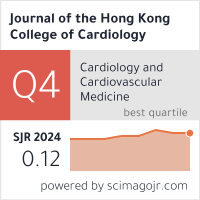Abstract
Stroke is an important cause of morbidity and mortality in Hong Kong. Extra-cranial carotid stenosis is a common cause of thrombotic stroke, although its incidence is less in Chinese compared with Caucasians. Carotid endarterectomy is the conventional revascularization procedure for carotid stenosis. In the past decade, carotid angioplasty has been emerging as a treatment option for patients with significant carotid stenosis. Due to the intrinsic mechanism of angioplasty, distal embolization causing thromboembolic stroke has been one of the most important complications of carotid stenosis. Distal protection has been shown to be safe and effective in preventing distal embolization during the procedure. According to their mechanism, distal protection devices can be categorized into two major types, namely distal occlusion balloon and filters. Distal occlusion balloon system is of lower crossing profile but it causes temporary cessation of blood flow during the procedure, which may not be well tolerated in all patients. Filters, on the other hand, allow continuous blood flow during the procedure but are of much higher crossing profile, which may make their passage through tight and angulated lesions difficult and traumatic. The choice of the different distal protection devices depends on the characteristics of the lesions and the status of contralateral carotid artery and collateral supply. Local experience reported similar feasibility and efficacy as in the literature. Although the ideal distal protection device is yet to be developed, the use of distal protection devices would become, wherever feasible, a standard during carotid stent-supported angioplasty.
Recommended Citation
Steven Siu-Lung Li, Yui-Chi So, Chiu-Lai Fu, Cheuk-Hon Wong, Carotid Stent-Supported Angioplasty Using Different Distal Protection Devices Journal of the Hong Kong College of Cardiology 2002;10(4) https://doi.org/10.55503/2790-6744.1197
Creative Commons License

This work is licensed under a Creative Commons Attribution-Noncommercial-No Derivative Works 4.0 License.



